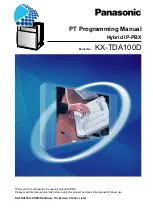
Electrical Maintenance (Rev 6/98)
49
3.
Slide the float up to the upper stop and check the conti-
nuity through the switch (between the 8F wire and the
OLS wire). The switch should be open.
4.
Slide the float down to the lower stop and check the
continuity through the switch (between the 8F wire and
the OLS wire). The switch should be closed.
5.
Replace the switch if the float sinks or does not slide
freely, or if the switch does not open and close properly.
Push-in Style Oil Level Switch
Sensor Tests
The sensors can be tested using one or both of the following
methods. The test using the diode test may be easier to per-
form and take less time, but it may produce ambiguous
results. The test that measures the actual voltage drop across
the sensor is more accurate and dependable.
1.
Lower Stop
2.
Float
3.
Upper Stop
4.
Actuation Level
1
2
3
3.625 in. NC
4
AEA1360
Diode Test
The sensor can be tested with a Fluke multimeter set on the
diode test.
With the red lead of the multimeter connected to the red
wire of the sensor and the black lead of the multimeter con-
nected to the black wire of the sensor, the voltage drop
across the sensor should be 1.6-1.8 Vdc. A very high read-
ing such as OL 9open circuit) indicates that the sensor has
failed by becoming an open circuit. A very low reading
9below 1 Vdc) indicates that the sensor has failed by
becoming a short circuit. This is the normal polarity used on
the sensor in the circuit.
With the black lead of the multimeter connected to the red
wire of the sensor and the red lead of the multimeter con-
nected to the black wire of the sensor, the voltage drop
across the sensor should be 0.5-0.7 Vdc. The voltage drop
across the sensor is inversely proportional to the tempera-
ture of the sensor. At a sensor temperature of approximately
21° C (70° F), the voltage drop should be approximately
0.61 Vdc. At a sensor temperature of approximately 0° C
(32° F), the voltage drop should be approximately 0.65 Vdc.
This is the reverse polarity and is not used on the sensor in
the circuit.
If the results of this test are inconclusive, perform an actual
voltage drop test.
Actual Voltage Drop Test
The actual voltage drop across the sensor can be determined
by connecting the sensor to the sensor circuit and measuring
the voltage drop across the sensor with a voltmeter.
NOTE: The sensor circuit must be functioning normally
with a voltage of 4.95-5.05 Vdc between the white and
black wires when the sensor is disconnected.
The sensor can be connected to the sensor circuit with
jumper wires and the voltage drop can be checked between
the jumper wires.
Содержание Super II SR+
Страница 4: ......
Страница 10: ...ii ...
Страница 14: ...4 ...
Страница 22: ...Unit Description Rev 6 98 12 Front View AEA1350 ...
Страница 23: ...Unit Description Rev 6 98 13 Right Side Door Open AEA1351 ...
Страница 24: ...Unit Description Rev 6 98 14 Left Side Doors Open AEA1352 ...
Страница 26: ...Operating Instructions Rev 6 98 16 Control Box Cover AEA1354 ...
Страница 34: ...24 ...
Страница 42: ...Electronic Controls Rev 6 98 32 SOFTWARE REVISION 04XX ALARMS AEA1358 ...
Страница 82: ...72 ...
Страница 90: ...80 ...
Страница 116: ...106 ...
Страница 120: ...110 ...
Страница 130: ...120 ...
Страница 141: ...131 Schematic Diagram SBIII SII RMNII 30 SR MPIV ...
Страница 142: ...132 Wiring Diagram SII SBIII RMN30 SR MPIV Page 1 of 4 ...
Страница 143: ...133 Wiring Diagram SII SBIII RMN30 SR MPIV Page 2 of 4 ...
Страница 144: ...134 Wiring Diagram SII SBIII RMN30 SR MPIV Page 3 of 4 ...
Страница 145: ...135 Wiring Diagram SII SBIII RMN30 SR MPIV page 4 of 4 ...
















































